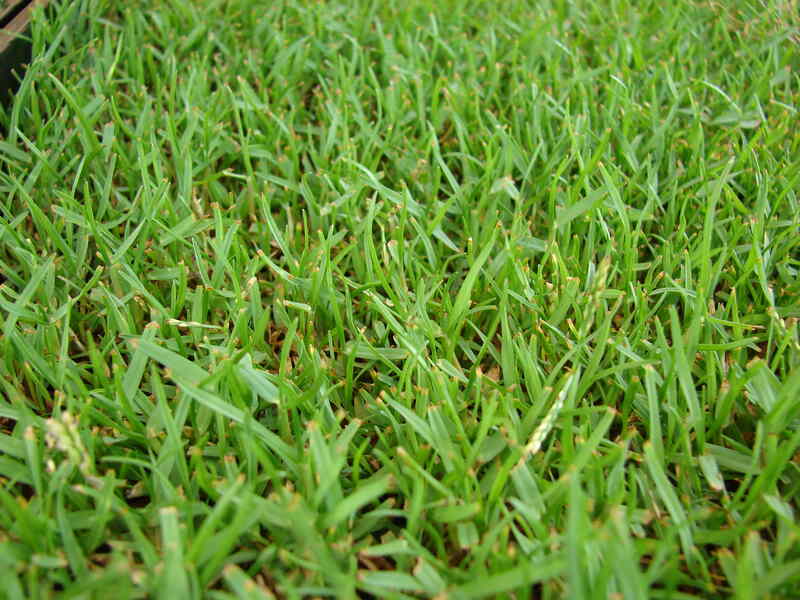The Best Grasses for West Texas Lawns
BY STUART KUSHNER | MAY 4TH, 2023 | LAWN CARE, TEXASWest Texas is a desert – dry as a bone, hot as a stovetop, and with rainfall as scarce as hen’s teeth. In short, maintaining a lush lawn here can be difficult. So establishing a great yard begins with selecting grass that’s best for West Texas lawns.
In this article:
- Bermudagrass
- Zoysiagrass
- Buffalograss
- Seashore Paspalum
- FAQs About the best grass for West Texas lawns
Bermudagrass

Photo Credit: Bidgee / Wikimedia Commons / CC BY-SA 3.0
Bermudagrass is one of the most popular grasses grown in West Texas. It is highly drought-resistant (perfect for Texas) and handles foot traffic nicely, recovering quickly after your kids and pets play in the yard.
Bermudagrass comes in many varieties, many of which are used in lawns, golf courses, and athletic fields. But if you want low-maintenance grass, this isn’t it. It requires frequent mowing, regular fertilization, and constant dethatching.
Classification: Warm-season grass
Spreads by: Both stolons and rhizomes
Shade tolerance: Low
Drought tolerance: High
Foot traffic tolerance: High
Maintenance needs: Moderate
Mowing Height: 1.5 to 2.5 inches
Potential for disease: Low
Zoysiagrass

Photo Credit: Forest and Kim Starr / Flickr / CC BY 2.0
West Texas’ arid climate is no problem for Zoysiagrass. Even in such high temperatures, Zoysiagrass retains its green color, only losing it during extreme drought. It can handle shade but does best in sunlight.
Zoysiagrass needs more fertilization than usual during the growing season to maintain its green color. It also requires dethatching, so you need to keep after it to reap the benefits.
Classification: Warm-season grass
Spreads by: Stolons and rhizomes
Shade tolerance: Moderate
Drought tolerance: Moderate to high
Foot traffic tolerance: High
Maintenance needs: Mow about once a week
Mowing Height: 1 to 2 inches
Potential for disease: Low to moderate
Buffalograss

Photo Credit: Pixnio
If you want a low-maintenance lawn, buffalograss is worth looking into. It’s highly drought-tolerant and prefers the heavy clay soils in West Texas. Planting it in areas with high rainfall risks inviting invasive weeds and Bermudagrass.
Avoid planting buffalograss if your lawn is shady or if you plan on having many legs running around the yard.
Classification: Warm-season grass
Spreads by: Rhizome
Shade tolerance: Low
Drought tolerance: High
Foot traffic tolerance: Moderate
Maintenance needs: Very Low
Mowing Height: 2 to 3 inches
Potential for disease: Low
Seashore Paspalum

Photo Credit: Forest & Kim Starr / Wikimedia Commons / CC BY 3.0
Seashore paspalum thrives in the southern third of Texas becauses it doesn’t like prolonged low temperatures. It best suits golf course fairways, sports turf, and high-maintenance lawns.
Seashore paspalum is highly tolerant of saline soils, so if you live in an area with high salinity, consider planting this grass. The catch? It’s also highly prone to diseases like large patch and dollar spot.
Classification: Warm-season grass
Spreads by: Rhizomes and stolons
Shade tolerance: Low to moderate
Drought tolerance: Moderate
Foot traffic tolerance: Moderate
Maintenance needs: Moderate fertilizer and frequent mowing.
Mowing Height: 1 to 2 inches
Potential for disease: Moderate
FAQs About West Texas Lawns
With so many grass types at your fingertips, picking the right one can take time and effort. The key is to narrow down your options based on your yard and how much work you plan to do:
Zoysiagrass is your best choice if you want grass that can tolerate shade. Avoid Bermudagrass and buffalograss, as they don’t like the shade.
All grasses can handle the hot sun, but Bermudagrass and buffalograss are the best at doing so.
Do you plan on having kids and pets run around the yard often? Do you plan on throwing parties or barbecues? Though each grass can handle foot traffic well, Bermudagrass and Zoysiagrass handle feet the best.
There’s no such thing as a no-maintenance lawn, but the closest you’ll get to one is buffalograss, as it doesn’t require as much mowing, fertilizing, or dethatching as the others do.
Need Help Kicking Grass?
Growing a lush, green lawn in the desert can be challenging but doable. If you need help, contact Wikilawn’s lawn care professionals, and we’ll help you with whatever problems you have.
Main Photo Credit: Robert Gray / Wikimedia Commons / CC BY-SA 3.0